How Can We Help?
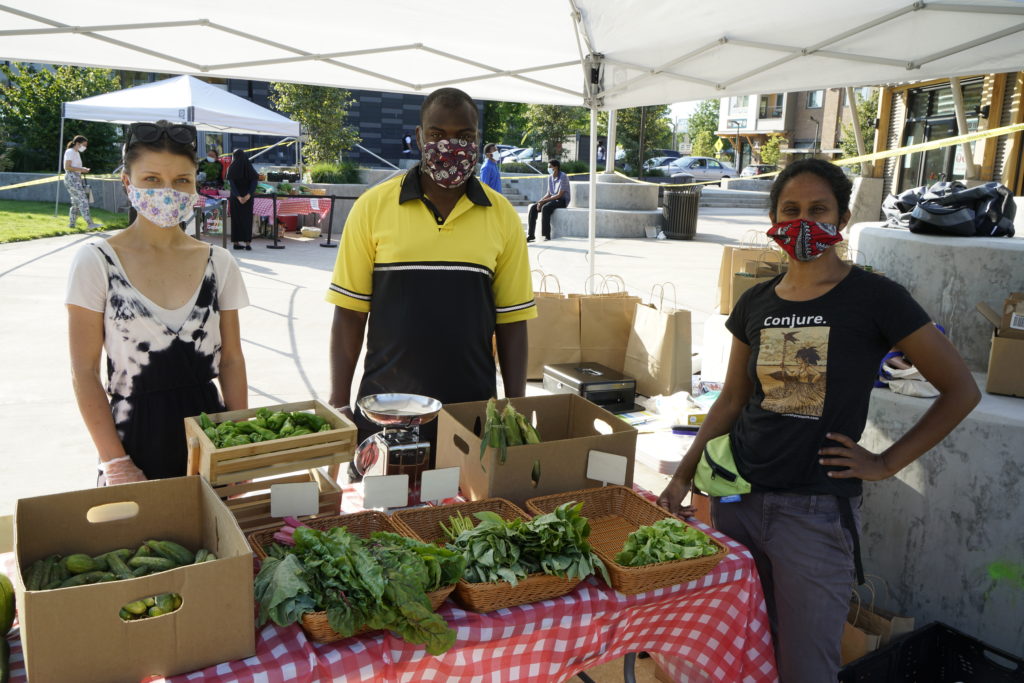
Organizing an Aggregate Table During a Global Pandemic
During its second year of existence, the Tukwila Village Farmers Market expanded to include the New Roots Aggregate Farm Stand. New Roots helps run the farmers market with the Food Innovation Network (FIN) beginning in the Spring and wrapping up at the end of the harvest season late in October. The market is open every Wednesday from 3-7pm.
The Tukwila Village Farmers Market is still relatively small, with three farms stands, including:
• Food Innovation Network– organic fruit from Collins Family Orchard
• Namuna Garden– fresh local produce grown by Krishna Biswa a refugee from Bhutan who graduated from New Roots Micro-Producer Academy
• New Roots Aggregate Farm Stand– fresh local produce grown by eight New Roots farm program participants
HOW TO SET UP AND ORGANIZE AN AGGREGATE TABLE:
Step 1: Identify the growers from whom you will purchase produce
The first step in organizing an aggregate table is to determine who’s produce will fill the stand. This step is relatively easy for New Roots because of the IRC’s Micro-Producer Academy’s (MPA) dedicated program graduates. The MPA is a series of classes teaching gardeners how to move into market gardening. The MPA graduates farm at Mary Gay Park where they each farm over 600 square feet of land.
Step 2: Order all materials needed for the physical farm stand
The next step is to make a list of everything you needed for the farm stand, including hygiene materials to stay in compliance with public health precautions. All staff must wear masks to prevent the spread of COVID-19. It is not necessary to purchase masks because everyone is expected to have their own at this point during the pandemic.
The list of materials we bought included: tables, pop-up tent, cash box, display baskets, chalkboard with prices, plastic table cloths, produce bags, scale, sign, hand sanitizer, gloves, and yellow caution tape.*
*materials provided by FIN
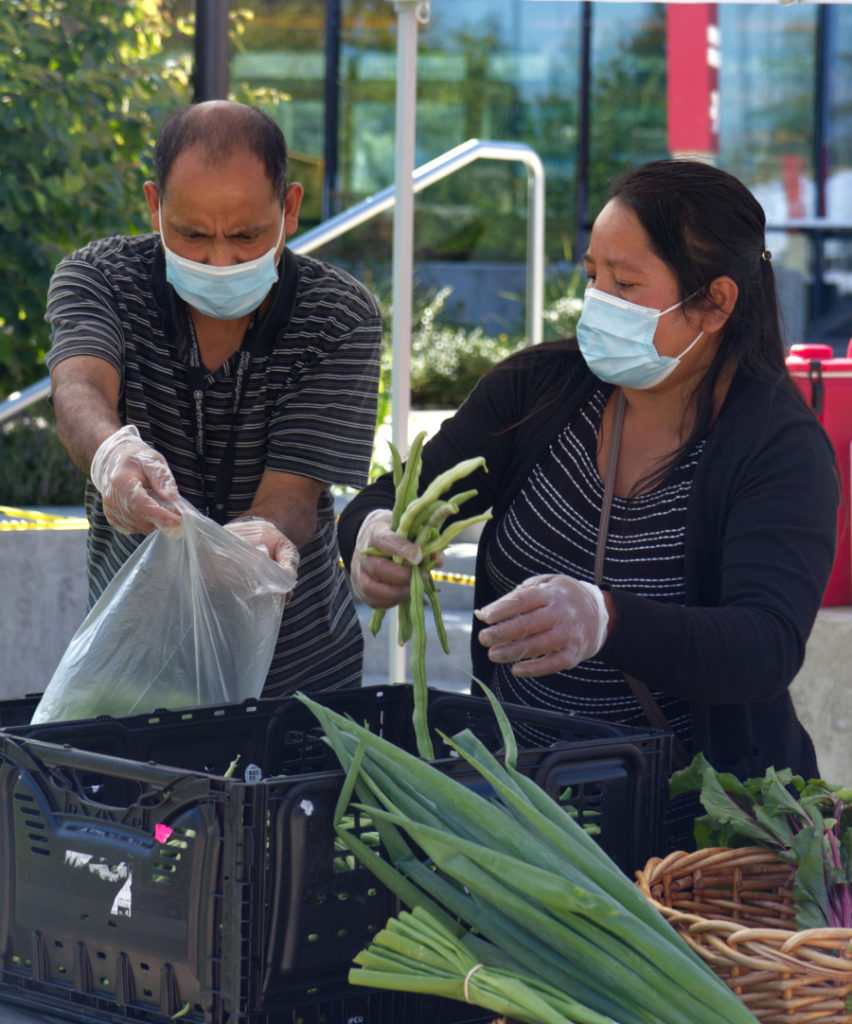
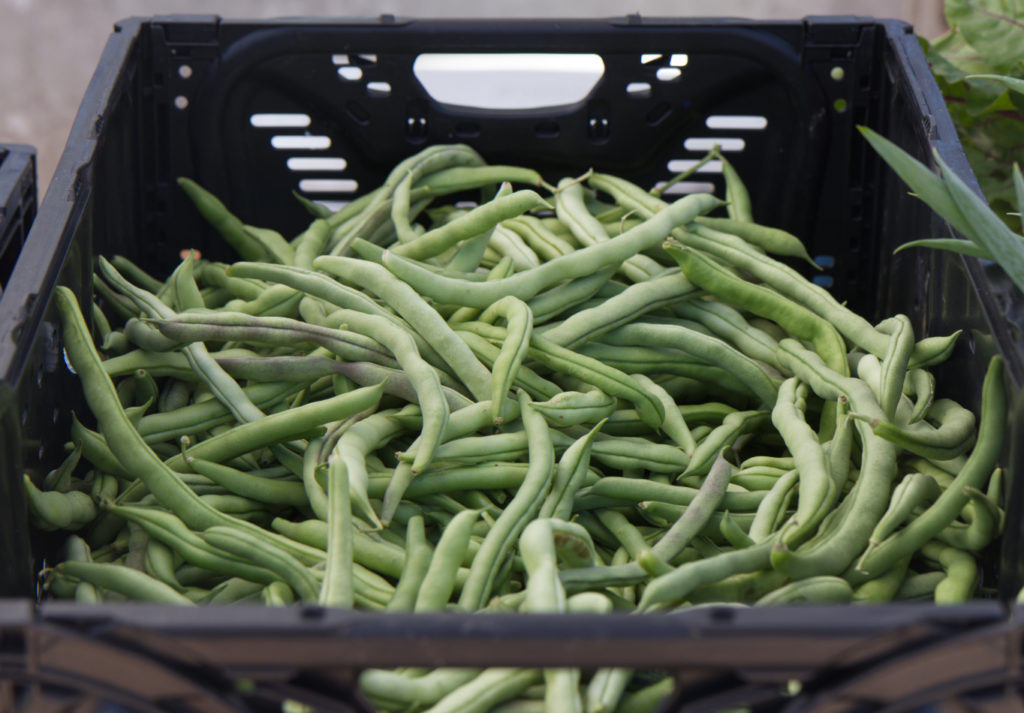
Step 3: Communicate with the New Roots Specialist about what produce can be harvested and purchased for the table each week.
In order to plan for the purchase of produce for the market each week, someone at the farm or in contact with the growers needs to get a list of what produce is ready to harvest each week. With the list of available produce, one can decide on how much produce to purchase from each grower. It will also be important to request a list from each grower at least a day in advance so they have enough time to properly harvest and wash their produce before market day.
In order to determine prices, either speak with each grower individually, or come up with a purchase price to use with every farmer. Let each grower know when the produce is needed, how much will be purchased, and how they get paid. After consulting other IRC New Roots programs across the US, we learned that it is best to pay each grower for the produce they sell you whether or not it is sold. This avoids the need to weigh each grower’s produce at the end of market.
Keep track of purchases from each grower on a separate excel tab so that at the end of the season each farmer can be paid without having to write checks each week.
Step 4: Find other farms to purchase from to fill any gaps in produce not grown by your growers
If you feel that your aggregate farm stand could benefit from a greater diversity of produce than your small-scale market farmers are growing, consider purchasing produce from other farms. Contact potential candidate farms and explain who you are, what your organization is all about and why you want to purchase produce from them at wholesale price. If they are interested in selling you wholesale produce to sell at your aggregate stand, ask them to send their fresh sheet on a weekly basis. A fresh sheet is the list of produce and prices that the farm offers each week. It is important to find out how far in advance each week you need to order produce to ensure it is delivered or picked up on the day of your market.
When a farm you want to buy produce from is identified, you need to coordinate pickup or delivery. If the farm offers delivery there might be an extra cost, so pickup might be preferred. In this case, either you, another staff member or volunteer will need to pick up the produce each week and deliver it to the farmers market. Make sure that the boxes of produce will fit in the transportation vehicle.
It is very important to keep a record of all orders and invoices so you know how much you spend each week and also to pay the invoices on time. At the IRC, invoices are paid by filling out a check request voucher form that is signed by the New Roots program supervisor and the finance team. If possible, set up an ACH so that payments are automatic and mailing checks is not required.
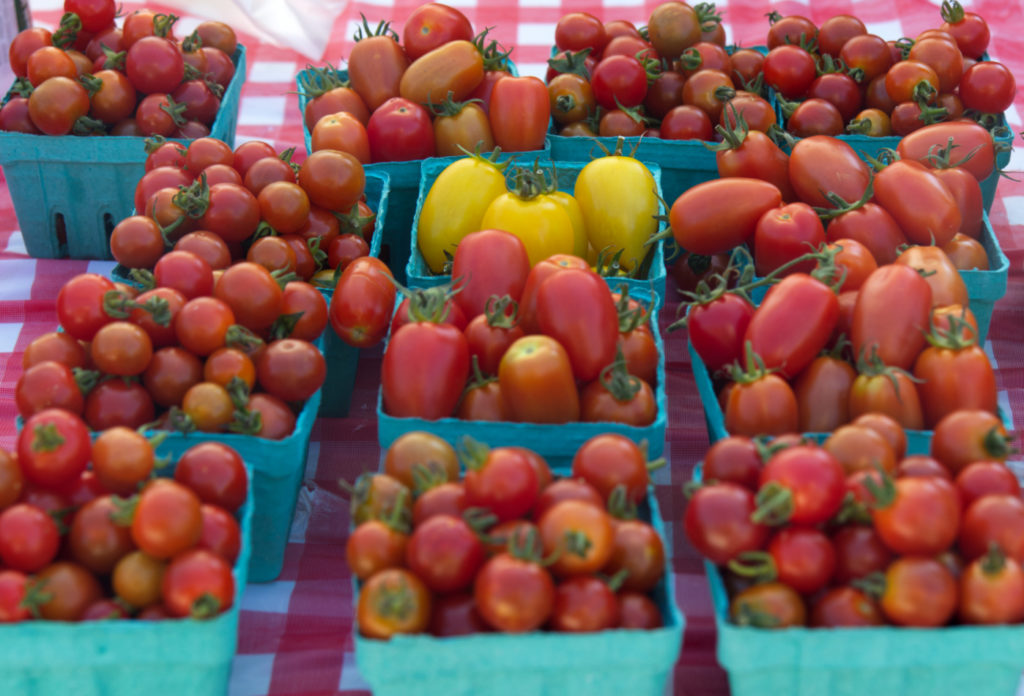
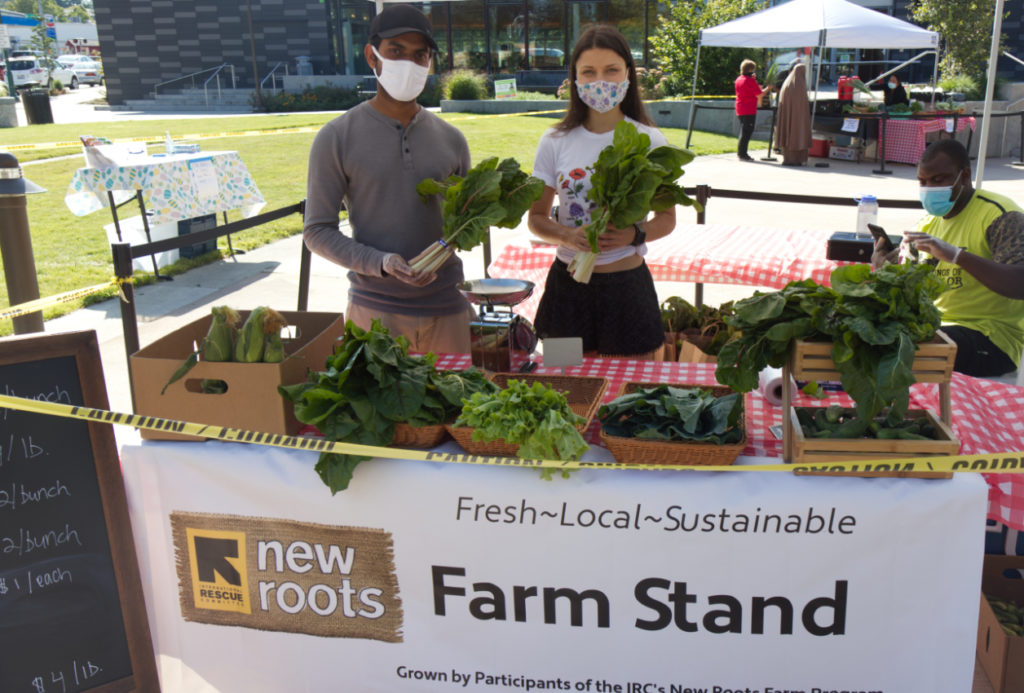
Step 5: Identify someone within your organization or a volunteer to help with the farm stand
New Roots recruited and trained a farm program participant to help out at the farm stand. It was an ideal situation because he was one of the growers who supplied the farm stand and had plans to scale up that coming year. The experience he gained at the market with customer service was invaluable. His tasks included setting up and breaking down the farm stand and tent, weighing and selling the produce and keeping track of the till.
Each week on a physical form, record the amount of produce in lbs. or units at the beginning of the market and the amount at the end. This means weighing all the produce harvested for the market, as well as the produce that was leftover each week- if there was any!
Step 6: Record everything!
Be as detailed as possible when recording items purchased and sold at the market. This ensures a better understanding of what worked and what did not work so well at the market. In the excel spread sheet for the Aggregate Farm Stand we recorded produce purchased from each grower on individual tabs, purchases from other farmers and a tab dedicated to sales. The Sales tab is the most comprehensive as we kept track of sales with every type of payment method (ie. EBT, Market Match, Vouchers, Cash, Card), sales from each produce source including New Roots growers and the farms that we purchased from and lastly we calculated percentage sold each week and recorded any relevant notes.
Step 7/ Ongoing: Market the Market
You will need to come up with a marketing plan to encourage people to shop at your market. This could be in collaboration with other organizations who are either already involved with the market or who share similar stakeholders. In collaboration with the Food Innovation Network (FIN), the IRC coordinated distribution of market flyers with community members primarily on social media platforms. Additionally, New Roots created an Instagram account where posts about the market were scheduled on a weekly basis.


